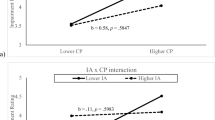Abstract
We examined whether parent/caregivers and teacher/therapists differ in their perceptions of the behavior problems of young maltreated children. The sample consisted of 33 maltreated preschoolers (58% neglected, 24% sexually abused, 18% physically abused, 59% African American, 41% Caucasian) enrolled in a metropolitan-area treatment center providing an educational/intervention program for maltreated children and their families. Most (82%) of the participant families had an annual income of $10,000 or less. Parent/caregivers and teacher/ therapists provided data about the children, employing the Colorado Child Temperament Inventory, Child Behavior Checklist, and Preschool Behavior Questionnaire. The results indicate that the teacher/therapists and the parent/caregivers perceived the same child as behaving differently. Implications concerning how teachers and parents might communicate are discussed, as well as possible reasons for the two different perceptions of the same child. Three potential reasons for the differences are that they are due to the different perspectives of parents and teachers in assessing child behaviors, to situational variation in child behavior (e.g., home versus school), or to some combination of both effects.
Similar content being viewed by others
REFERENCES
Abbot, J. C., & Sabatino, D. A. (1975). Teacher-Mom intervention with academic high-risk preschool children. Exceptional Children, 44 267-268.
Achenbach, T. M. (1991). Manual for the Child Behavior Checklist/4-18 and 1991 Profile. Burlington, VT: University of Vermont Department of Psychiatry.
Achenbach, T. M. (1992). Manual for the Child Behavior Checklist/2-3 and 1992 Profile. Burlington, VT: University of Vermont Department of Psychiatry.
Achenbach, T. M., McConaughy, S. H., & Howell, C. T. (1987). Child/adolescent behavioral and emotional problems: Implications of cross-informant correlations for situational specificity. Psychological Bulletin, 101 213-232.
Achenbach, T. M., & Edelbrock, C. S. (1986). Manual for the Teacher's Report Form and Teacher Version of the Child Behavior Profile. Burlington, VT: University of Vermont, Department Psychiatry.
American Psychological Association (1992). Ethical principles of psychologists and code of conduct. American Psychologist, 47 1597-1611.
Baker, B. L., & Heller, T. L. (1996). Preschool children with externalizing behaviors: Experience of fathers and mother. Journal of Abnormal Child Psychology, 24 513-532.
Behar, L. B. (1977). The Preschool Behavior Questionnaire. Journal of Abnormal Child Psychology, 5 265-275.
Behar, L. B., & Stringfield, S. (1974). Manual for the Preschool Behavior Checklist. Durham, NC: Lenore Behar.
Buss, A. H., & Plomin, R. (1984). Temperament: Early developing personality traits. Hillsdale, NJ: Erlbaum.
Campbell, S. B. (1995). Behavior problems in preschool children: A review of recent research. Journal of Child Psychology and Psychiatry, 36 113-150.
Doyle, A., Ostrander, R., Skare, S., Crosby, R. D., & August, G. J. (1997). Convergent and criterionrelated validity of the Behavior Assessment System for Children-Parent Rating Scale. Journal of Clinical Child Psychology, 26 276-284.
Fantuzzo, J. W., Weiss, A. D., Atkins, M., Meyers, R., & Noone, M. (1998). A contextually relevant assessment of the impact of child maltreatment on the social competencies of low-income urban children. Journal of the American Academy of Child and Adolescent Psychiatry, 37 1201-1209.
Feil, E. G., Walker, H. M., & Severson, H. H. (1995). The early screening project for young children with behavior problems. Journal of Emotional and Behavioral Disorders, 3 194-202.
Hoge, R. D., Meginbir, L., Khan, Y., & Weatherall, D. (1985). A multitrait-multimethod analysis of the preschool behavior questionnaire. Journal of Abnormal Child Psychology, 13 119-127.
LeBlanc, R., & Reynolds, C. R. (1989). Concordance of mothers' and fathers' rating of children's behavior. Psychology in the Schools, 26 225-229.
Lindholm, B. W., & Touliatos, J. (1981). Parents and teachers' perceptions of children in counseling and not in counseling. Journal of Psychology, 108 283-289.
Morgan, G. A., & Griego, O. V. (1998). Use and interpretation of SPSS for Windows. Mahwah, NJ: Lawrence Erlbaum Associates.
Morris, J. D., & Arrant, D. (1978). Behavior ratings of emotionally disturbed children by their teachers, parents, and school psychologists. Psychology in the Schools, 15 450-455.
Powell, D. R. (1978). Correlates of parent-teacher communication frequency and diversity. The Journal of Educational Research, 71 332-340.
Rende, R. D. (1993). Longitudinal relations between temperament traits and behavioral syndromes in middle childhood. Journal of the Academy of Child and Adolescent Psychiatry, 32 287-290.
Rosenthal, R., & Jacobson, L. (1966). Teachers' expectancies: Determinants of pupils' IQ gains. Psychological Reports, 19 115-118.
Schaughency, E. A., & Lahey, B. B. (1985). Mothers' and fathers' perceptions of child deviance: Roles of child behavior, parental depression, and marital satisfaction. Journal of Consulting and Clinical Psychology, 53 718-723.
Schmitz, S., Saudino, K. J., Plomin, R., Fulker, D. W., & DeFries, J. C. (1996). Genetic and environmental influences on temperament in middle childhood: Analyses of teacher and tester ratings. Child Development, 67 409-422.
Vaughn, M. L., Riccio, C. A., Hynd, G. W., & Hall, J. (1997). Diagnosing ADHD (Predominately inattentive and combined type subtypes): Discriminant validity of the Behavior Assessment System for children and the Achenbach parent and teacher rating scales. Journal of Clinical Child Psychology, 26 349-357.
Verhulst, F. C., & Akkerhuis, G. W. (1989). Agreement between parents' and teachers' ratings of behavioral/ emotional problems of children aged 4-12. Journal of Child Psychology and Psychiatry, 30 123-136.
Verhulst, F. C., Koot, H. M., & Van der Ende, J. (1994). Differential predictive value of parents' and teachers' reports of children's problem behaviors: A longitudinal study. Journal of Abnormal Child Psychology, 22 531-546.
Zahn-Waxler, C., Schmitz, S., Fulker, D., Robinson, J., & Emde, R. (1996). Behavior problems in 5-year-old monozygotic and dizygotic twins: Genetic and environmental influences, patterns of regulation, and internalization. Development and Psychopathology, 8 103-122.
Zimmerman, R. S., Khoury, E. L., Vega, W. A., Gil, A. G., & Warheit, G. J. (1995). Teacher and parent perceptions of behavior problems among a sample of African American, Hispanic, and non-Hispanic white students. American Journal of Community Psychology, 23 181-198.
Author information
Authors and Affiliations
Rights and permissions
About this article
Cite this article
Culp, R.E., Howell, C.S., Culp, A.M. et al. Maltreated Children's Emotional and Behavioral Problems: Do Teachers and Parents See the Same Things?. Journal of Child and Family Studies 10, 39–50 (2001). https://doi.org/10.1023/A:1016631111859
Issue Date:
DOI: https://doi.org/10.1023/A:1016631111859




